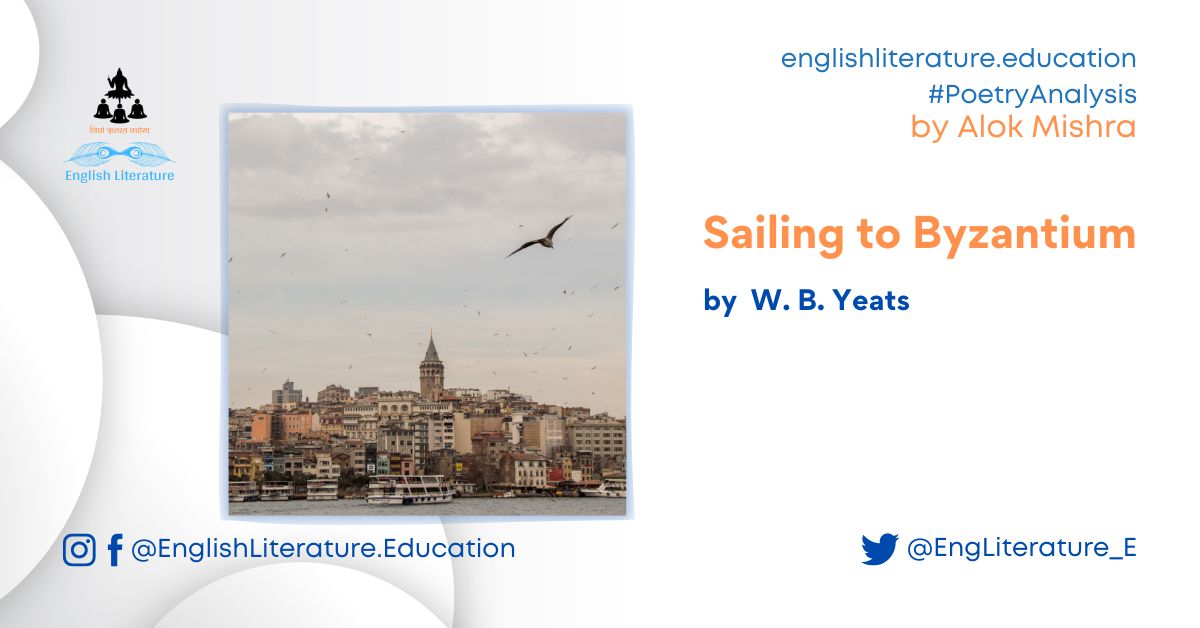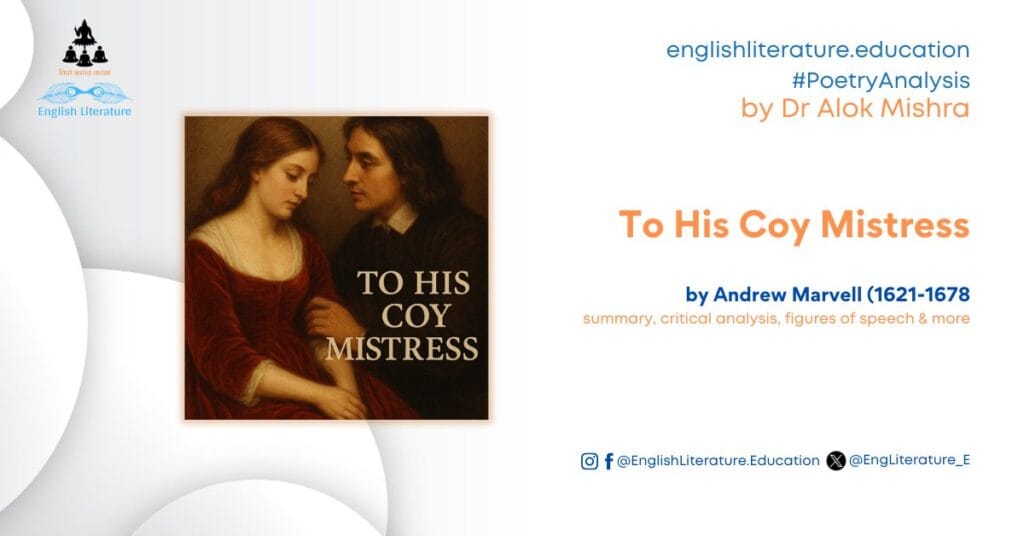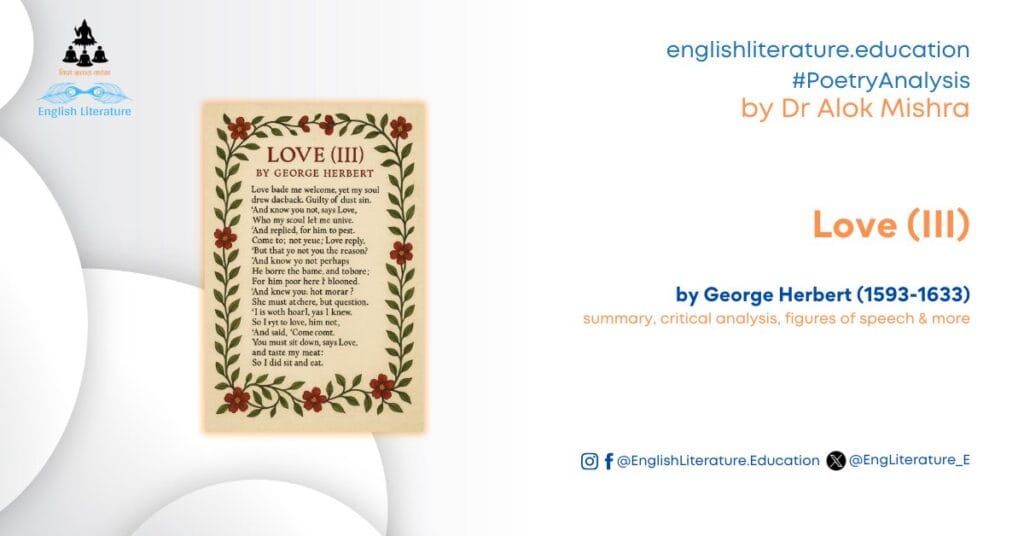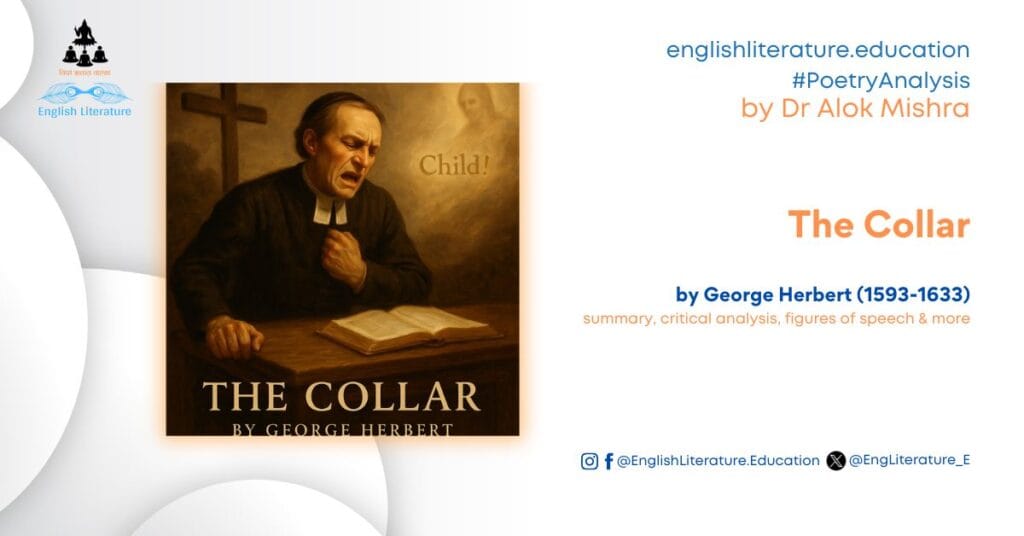Sailing to Byzantium by W. B. Yeats is a reflective and contemplative poem that explores the contrast between youth and old age, mortality and spiritual immortality, and the quest for enduring significance. In short, you can argue that the poet tries to highlight the universal binary oppositions through his poem, highlighting the most significant battle between what’s bound to decay and what’s here to remain. Sailing to Byzantium remains a significant poem that bears the marks of Yeats’ masterful use of imagery, metaphors, and symbolism that enhance the poem’s depth. Yeats’ art of poetry makes it a timeless exploration of the human condition and the longing for eternal meaning amidst the transient nature of life. As one of W. B. Yeats’ most iconic works, Sailing to Byzantium remains a testament to the poet’s introspective and visionary exploration of life’s complexities and the eternal search for meaning. Its influence on the literary world, its profound themes, and its masterful use of poetic devices have solidified its place as a timeless and cherished piece of literature.
History of the poem:
It was first published in 1928 as part of his collection titled The Tower. The poem holds a significant place in Yeats’ body of work and is considered one of his most celebrated and enduring pieces. The poem was written during a crucial period in Yeats’ life when he was in his early sixties, and he was trying to give voice to his thoughts of yearning for spiritual knowledge and philosophical liberation. Yeats had a deep interest in mysticism and the occult, and these themes are evident in many of his later works, including Sailing to Byzantium.
The Title of the poem:
The title Sailing to Byzantium holds historical and symbolic significance. Byzantium refers to the ancient city of Byzantium, later known as Constantinople and now modern-day Istanbul. Byzantium had a rich cultural and artistic heritage, and it became a centre of spiritual and intellectual pursuits during the Eastern Roman Empire (Byzantine Empire). Yeats uses the city as a metaphor for a realm of timeless wisdom and artistic immortality.
Structure, Rhyme Scheme, and Prosody of the poem Sailing to Byzantium:
The poem is divided into four parts, having 8 lines each and each section explores different aspects of the themes Yeats was grappling with. Every section follows the same rhyme scheme – abababcc. W. B. Yeats employs the iambic pentameter as the dominant metrical verse throughout the poem. (Iambic pentameter is a meter commonly used in English poetry, where each line consists of five feet, and each foot is an iambic foot.) It is important to observe that throughout the poem, the poet ensures that the iambic pentameter maintains a regular and measured rhythm, contributing to the poem’s formal and structured tone. This metrical choice not only enhances the musicality of the poem but also adds to the contemplative and introspective mood, guiding the reader through the speaker’s philosophical reflections.
Summary of the poem Sailing to Byzantium by Yeats:
Sailing to Byzantium poem is divided into four distinct parts. It delves into the themes of ageing, mortality, the desire for spiritual transcendence, and the search for enduring artistic significance. Each part contributes to the overall contemplation of human existence and the yearning for a timeless realm beyond the limitations of the physical world. Below, you can read the summary of every part of the poem.
Part I:
The poem opens with a reflection on the unsuitability of the world for old age. The speaker observes and highlights the vitality and passion of the young, emphasising their physical and emotional connections. Meanwhile, the poet compares older generations to dying birds whose significance is often overlooked in the midst of youthful energy. The first part of the poem sets the stage for the speaker’s feeling of displacement and a longing for something more meaningful and lasting.
Part II:
In the second part, the speaker laments the insignificance of aged individuals in society, describing them as “paltry” and “tattered.” The physical decay of the elderly seems to diminish their importance in the eyes of the younger generations. However, the speaker proposes that the soul can rise above the frailty of the body and find reasons to celebrate its existence. The soul, through introspection and study, can become a monument to its own magnificence despite the ageing mortal dress it inhabits. Here, the poet may have been drawing his inspiration from the ancient Hindu scriptures – prominently the Bhagavad Gita – that celebrate the soul because its free from the burdens of the body for those who are realised.
Part III:
In this section, the speaker shares his personal journey of seeking spiritual enlightenment. He reveals his quest for the “holy city of Byzantium,” which symbolises a realm of timeless wisdom and spiritual significance. The speaker desires to encounter sages standing in God’s holy fire, illuminated and wise beings who can guide him in his pursuit of spiritual growth and understanding. Byzantium becomes the ultimate destination, representing the place where art, intellect, and spirituality converge, offering a possibility of eternal significance. Mark that Byzantium is a very important place for Christians. The poet is using the city as a symbol of spiritual liberation, albeit within the confines of Christianity.
Part IV:
The final part of the poem reiterates the speaker’s desire to be transformed by the wisdom of the sages, who are the “singing-masters” of his soul. He hopes to transcend the limitations of his ageing body and find his own inner song. The poem ends on a note of yearning, suggesting that the journey is ongoing, and the pursuit of spiritual enlightenment is a lifelong endeavour.
Line by Line Explanation (with critical commentary) of the poem Sailing to Byzantium by Yeats:
The text of the poem:
I
Lines 1-4:
That is no country … the mackerel-crowded seas,
The opening line is remarkable, asserting and revealing. In this opening line, Yeats tries to establish the central theme of the poem: the world in which the speaker currently resides is not suitable for ageing individuals. The statement implies that the speaker feels disillusioned with the changing world around him and seeks a more timeless and enduring place. The phrase “in one another’s arms” conjures images of youth and vitality, highlighting the physical and emotional connections that young people share. It emphasises the stark contrast between the speaker’s aged state and the youthful vigour of those around him. Does the speaker feel worried or sad about his age? We will know later. We can argue that the poet, Yeats, employs birds as a metaphor for human generations, emphasising their fleeting nature. The term “dying generations” implies the continuous cycle of birth and death, underscoring the transience of life. The mention of “song” adds a layer of artistic and creative expression that represents the vitality and beauty of youth’s artistic endeavours. Further, the poet uses references to natural elements, like the “salmon-falls” and “mackerel-crowded seas,” to symbolise the abundance and energy of the natural world, contrasting it with his own waning vitality. So, in the first four lines of the poem, Yeats emphasises the speeding universe that seldom stops to mourn or lament… the universe has its pace and we have ours. One is eternal and another is merely bound to time.
Lines 5-8:
Fish, flesh, or fowl, … unageing intellect.
The opening of the 5th line reinforces the abundance and richness of the natural world, which remains constant throughout the summer season. It may also suggest that all living beings, regardless of their form (“Fish, flesh, or fowl”), find sustenance and joy during this time. In addition, do you think the poet suggests summer to be the prime of all living beings? Think and try to find more in this direction. The poet further suggests the universal truth – death follows birth, every time. This line acts as a reminder of the cycle of life and death, encompassing all living beings. The “sensual music” in line 7 refers to the natural rhythm and vitality of life, which captivates and absorbs the attention of the young, causing them to overlook the older generation’s concerns. Moreover, it also makes them temporarily forget the inevitable truth that lingers above us all, all along. The last line introduces the concept of “monuments of unageing intellect,” hinting at the speaker’s desire for something more enduring and immortal than the fleeting beauty of youth.
II
These lines from “Sailing to Byzantium” capture the essence of the poem’s central theme—the contrast between physical ageing and the potential for spiritual transcendence. Let’s delve into a critical explanation of these lines:
“An aged man is but a paltry thing,
A tattered coat upon a stick, unless”
In these lines, the speaker reflects on the state of an elderly person in the context of the changing world. The use of the word “paltry” suggests that in the eyes of society, the aged person is considered insignificant, undervalued, and perhaps even pitiable. The comparison to a “tattered coat upon a stick” evokes an image of frailty, decay, and vulnerability. The image emphasizes the physical decline that comes with age and conveys a sense of desolation. However, the word “unless” introduces a crucial condition, indicating that there is an exception to this view of the aged person’s insignificance. And then, the speaker proposes that there is a way for the elderly to rise above their diminished physical state and find value and meaning in their existence.
“Soul clap its hands and sing, and louder sing
For every tatter in its mortal dress,”
The turning point in the poem comes with the notion that the soul, despite residing in an ageing body (“mortal dress”), possesses the potential to create its own significance and celebrate its existence. The soul is depicted as clapping its hands and singing, signifying an act of joy, celebration, and expression of inner vitality. The soul’s ability to sing “louder” in response to “every tatter” in its mortal dress suggests that the more the body experiences decay and wear, the more the soul seeks to affirm its own inner richness and artistic essence. These lines offer a philosophical perspective on the human experience of ageing. They assert that despite the physical limitations and decay associated with old age, the soul’s capacity for creativity, spiritual growth, and self-expression remains intact. The act of clapping hands and singing symbolises the soul’s ability to find joy, purpose, and meaning, regardless of the ageing body’s limitations. Moreover, if you compare Yeats’ metaphors to that of the Hindu scripture Gita, you can find similarities, way more than you might expect. In Bhagavad Gita, Sri Krishna, the supreme deity, asserts that the soul has its own journey. Body, a new body, then another one, and so on… bodies are only halts in the journey that continues. Refer to the Shloka 22 in the second chapter:
वासांसि जीर्णानि यथा विहाय नवानि गृह्णाति नरोऽपराणि।
तथा शरीराणि विहाय जीर्णा- न्यन्यानि संयाति नवानि देही ।।2.22।।
Overall, these lines are pivotal in the poem as they introduce the idea of the soul’s resilience and its potential to rise above the mortal world’s constraints. They highlight the contrast between the fleeting nature of the physical body and the enduring essence of the soul, underscoring the poem’s broader exploration of the human desire for spiritual immortality and artistic significance.
Lines 13-16:
Nor is there singing … city of Byzantium.
In these lines, the speaker continues to reflect on the pursuit of spiritual and artistic immortality, drawing upon the imagery of a city with cultural and historical significance. Let’s begin with line 13.
“Nor is there singing school but studying”
In this line, the speaker contrasts the conventional notion of a “singing school” with the concept of “studying”. To make it clear, the traditional singing school would typically focus on vocal training and musical education. However, in the context of the poem, the “singing school” represents more than just learning to produce music or songs. Yeats may have used this to symbolise the process of exploring and expressing the soul’s inner song, its artistic and spiritual essence. As we discussed in the explanation of lines 8-12. The choice of “studying” instead of the expected “singing” suggests a deeper, more introspective approach to understanding oneself and one’s artistic (and spiritual) identity. The speaker implies that true artistic and spiritual growth requires profound self-reflection and an ongoing quest for meaning. And what should one study?
“Monuments of its own magnificence;”
The speaker refers to the soul’s “monuments of its own magnificence”. Here, the “monuments” may represent the artistic and spiritual achievements that the soul can create and immortalise. These monuments are the lasting legacies of the soul’s creative endeavours and spiritual pursuits. The phrase “its own magnificence” emphasises the uniqueness and significance of the soul’s creations. The soul, through its inner exploration and artistic expression, can create something of profound beauty and value, independent of external judgments or recognition. All it may require is one’s indulgence in studying the soul!
“And therefore I have sailed the seas and come
To the holy city of Byzantium.”
In these lines, the speaker reveals the purpose behind his journey—to seek the “holy city of Byzantium”. As I mentioned before, Byzantium symbolises a realm of spiritual and artistic enlightenment. The city is regarded by many as a place where the pursuit of timeless wisdom and creative expression converge, offering the possibility of transcendence and immortality. The act of “sailing the seas” may hint at a metaphorical journey of self-discovery and the quest for higher understanding. It suggests a departure from the familiar and a willingness to explore uncharted territories in search of something greater.
Altogether, these lines highlight the importance of self-study and introspection in the pursuit of artistic and spiritual growth. And the poem, as far as we have discussed, conveys the idea that true artistic and creative expression emerges from a deep understanding of one’s inner self and a commitment to explore the depths of one’s soul. The reference to the “holy city of Byzantium” underlines the speaker’s desire to find a higher state of being, where art, intellect, and spirituality intertwine, offering the possibility of enduring significance beyond the limitations of the mortal world.
Because the article has become very long, it has been divided into two pages. Click on the next page to continue reading the line-by-line explanation of the third and fourth parts of the poem. Also, on the next page, you will find details about the poetic devices used in the poem as well as a concluding summary of it. Click on the link below to read the next page.





11 Comments. Leave new
Excellent 👌
Thanks for such critical appreciation of poem sailing to Byzantium..long live..
Thanks for such critical appreciation of poem sailing to Byzantium..long live..
Great effort , hats off to the writer for such a beautiful explanation
Thank you for this amazing analysis of the poem Sailing to Byzantium by W. B. Yeats. It really helped me a lot with my paper. Many thanks.
Very detailed, easy to understand and useful for students of English literature. I got the central idea of the poem as well as many other things that I seldom thought about might be a part of this wonderful poem by Yeats.
Thanks for this wonderful explanation… it was very helpful. Learned many things about the poem by W. B. Yeats by reading this article.
Amazing article… I was looking for something on Sailing to Byzantium. I am a BA second year student and this poem is in my English Honours syllabus. Thanks for this amazing critical analysis, clear summary and critical commentary on the poem by W B Yeats. Please write on more poems from Indian University Syllabuses.
Thanks so much for this helpful analysis of sailing to Byzantium by W. B. Yeats. It was very helpful for my seminar.
Wonderful… I have to study this poem in my BA syllabus and I must say this article helped me a lot. The article has covered almost every aspect of the poem Sailing to Byzantium and I am very happy with the way you have described the poem, explained it and also added critical comments in your analysis of the poem. Keep up this good job team!
Thanks for this wonderful analysis of the poem sailing to Byzantium. I have to study this poem as part of my BA English literature syllabus. I read a few articles on different websites. This is the best one with apt summary, line by line analysis and almost the perfect critical commentary that opens up the poem even for beginners in literature… Well done guys!